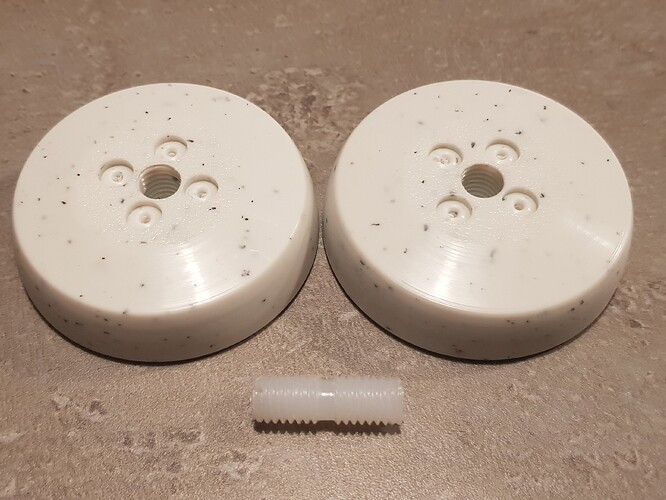This may be a plastic but my woods have the same response holes. It’s nothing new. TMBR used to use this too and OUT still do.
It’s not just about the holes though, the axle material, diameter and smoothness as well as the gap width are important in a wooden yoyo responding consistently. How coarse or fine the wood grain of the halves and how finely it is sanded also can have a big effect.
9 Likes
So how did the No Jive play with the knife cuts @codinghorror?
4 Likes
I’m still evaluating but the response seems much more consistent to me with the starburst cuts.
4 Likes
Your yoyo should respond properly without applying anything. I absolutely hate a fixed axle that doesn’t respond consistently.
14 Likes
Definitely liking the starburst cuts. I went over it again with the knife to make them a tad deeper.
Note that after you make the second round of cuts, use a beater string as depending on how the cuts go, it may wear through the string as it flattens the wood back out. I didn’t have this effect on the first round of cuts, but get a beater string ready if you go this route to break it in a bit.
I do feel this stabilized the response, made it much more consistent. You can tell there’s more friction because running your finger around the wood outside the cuts encounters almost no resistance, it’s completely smooth, whereas if you do the same thing inside the cuts, you feel those regular bumps and it definitely interrupts the smoothness that’d otherwise be there.
This is an inset starburst so it’s not like a “real” starburst which pokes out, not in. But then the holes drilled in other wood yo-yos are similarly inward and they seem to work so…
I’d also definitely not do this on a TK that you ever planned to flip around in 3-in-1 style or wanted to keep pristine for later – Turbo Disc stickers would be the way to go there versus a permanent mod like this. As I mentioned, this one has engravings on one side so it can’t really be flipped anyway.
7 Likes




